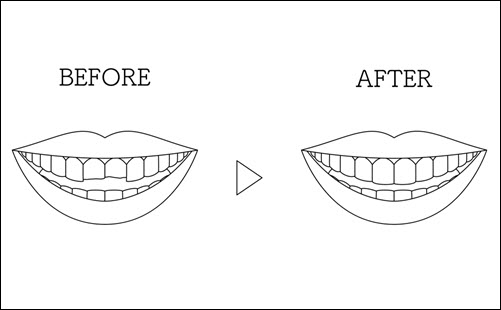Dental Bonding: Strengthen and Enhance Your Smile
Dental bonding repairs chipped, cracked, or discolored teeth quickly and effectively. Dentists apply a tooth-colored resin to the tooth surface, shaping and polishing it for a natural look. Bonding strengthens weakened enamel, closes gaps, and improves overall smile symmetry. The procedure is quick, painless, and requires minimal tooth preparation. Unlike veneers and crowns, bonding preserves more of the natural tooth structure. It improves tooth strength and appearance while reducing sensitivity. Dental bonding also covers discoloration and protects exposed roots. Understanding the benefits of dental bonding helps you achieve a healthier and more attractive smile. Let’s explore how dental bonding strengthens teeth and enhances your smile.
Quick and Painless Procedure
Dental bonding usually takes 30 to 60 minutes per tooth. The dentist begins by cleaning and lightly roughening the tooth surface. A conditioning liquid improves the bond between the tooth and the resin. The dentist applies the resin, shaping it to match the natural tooth structure. A special curing light hardens the resin within seconds. The dentist polishes the bonded tooth for a smooth, natural finish. Most bonding procedures require no anesthesia unless treating a decayed area. Patients can resume eating and drinking immediately after the procedure. Bonding provides immediate improvements with minimal discomfort. A quick procedure increases convenience and patient comfort.
Improves Smile Appearance
 Dental bonding improves the shape, color, and alignment of teeth. The resin matches the natural tooth color for a seamless look. Bonding fills small gaps between teeth and corrects uneven edges. It also covers deep stains and discoloration that whitening treatments cannot remove. Bonding reshapes misshapen teeth, improving overall smile balance. Unlike crowns and veneers, bonding requires minimal enamel removal. Better tooth shape and color increase confidence in personal and social settings. A more even smile improves facial balance and overall appearance. Dental bonding enhances smile aesthetics without complex dental work. A balanced smile increases self-esteem and social comfort.
Dental bonding improves the shape, color, and alignment of teeth. The resin matches the natural tooth color for a seamless look. Bonding fills small gaps between teeth and corrects uneven edges. It also covers deep stains and discoloration that whitening treatments cannot remove. Bonding reshapes misshapen teeth, improving overall smile balance. Unlike crowns and veneers, bonding requires minimal enamel removal. Better tooth shape and color increase confidence in personal and social settings. A more even smile improves facial balance and overall appearance. Dental bonding enhances smile aesthetics without complex dental work. A balanced smile increases self-esteem and social comfort.
Strengthens and Protects Teeth
Bonding reinforces weakened enamel and protects exposed tooth surfaces. The resin creates a protective barrier against plaque, bacteria, and acid erosion. Bonded teeth resist chipping and cracking better than untreated teeth. Bonding also reduces sensitivity by covering exposed dentin and tooth roots. The secure fit prevents further enamel loss and reduces the risk of tooth decay. Stronger teeth improve chewing comfort and reduce pressure on surrounding teeth. Bonding also distributes bite pressure evenly, improving tooth stability. Proper care increases bonding durability and overall tooth strength. Stronger teeth improve long-term oral health and reduce future dental issues.
Affordable and Cost-Effective
Dental bonding provides a more affordable option than veneers and crowns. Most bonding treatments cost less than other cosmetic dental procedures. Insurance often covers bonding when it restores damaged or decayed teeth. Bonding requires fewer materials and less chair time, reducing overall costs. Unlike veneers and crowns, bonding preserves more of the natural tooth structure. The procedure typically requires only one visit, saving time and money. Bonding also lasts between 5 to 10 years with proper care. Professional touch-ups and polishing extend bonding lifespan and maintain appearance. Affordable treatment increases accessibility to cosmetic dental care. Cost-effective bonding improves both smile strength and appearance.
Covers and Repairs Minor Damage
Dental bonding repairs small chips, cracks, and fractures in teeth. The resin bonds securely to the tooth surface, restoring its natural shape. Bonding also fills cavities and protects exposed roots from further damage. Small gaps between teeth are closed with bonding, improving smile alignment. The resin resists staining and wear, maintaining its color over time. Dentists match the resin shade to surrounding teeth for a natural look. Bonding prevents plaque buildup in cracks and gaps, reducing cavity risk. Stronger tooth surfaces improve chewing strength and bite comfort. Bonding protects vulnerable areas and restores natural tooth function. Quick repairs prevent long-term damage and sensitivity.
Minimal Tooth Preparation and Preservation
Bonding requires minimal tooth preparation compared to crowns and veneers. The dentist removes only a small amount of enamel to create a secure bond. Unlike crowns, bonding does not require reshaping the entire tooth. Preserving more natural enamel strengthens the tooth and reduces sensitivity. Less invasive procedures reduce discomfort and recovery time. Bonding strengthens the tooth structure without compromising its natural integrity. The secure fit increases tooth stability and chewing strength. Minimal enamel removal protects nerve tissue and reduces long-term sensitivity. Preserving natural tooth material improves overall dental health and bite comfort. Better tooth structure increases long-term dental strength and resilience.
Easy Maintenance and Longevity
Bonded teeth require simple daily care to maintain strength and appearance. Brushing twice a day with fluoride toothpaste prevents plaque buildup. Flossing daily protects the bonded surface from decay and gum disease. Avoiding hard foods and chewing on ice reduces the risk of chipping. Rinsing with antibacterial mouthwash reduces bacteria and improves breath freshness. Professional cleanings every six months keep bonded teeth looking smooth and polished. Bonding materials resist staining, but avoiding coffee, tea, and red wine preserves color. Minor repairs and touch-ups maintain bonding strength and appearance. Proper care increases bonding lifespan and overall dental comfort. Stronger teeth improve long-term smile quality and confidence.
Dental bonding strengthens teeth, improves appearance, and protects against future damage. The quick, painless procedure restores chipped, cracked, and stained teeth. Bonding improves smile balance, alignment, and color with minimal tooth preparation. Stronger bonded surfaces resist plaque, sensitivity, and chipping. Affordable treatment increases access to cosmetic dental care and long-term smile improvements. Proper care and regular dental visits extend bonding lifespan and maintain tooth strength. Investing in dental bonding enhances both smile confidence and oral health. Stronger teeth and improved alignment create a healthier, more attractive smile. Bonding offers a simple, effective solution for long-term dental strength and beauty.



